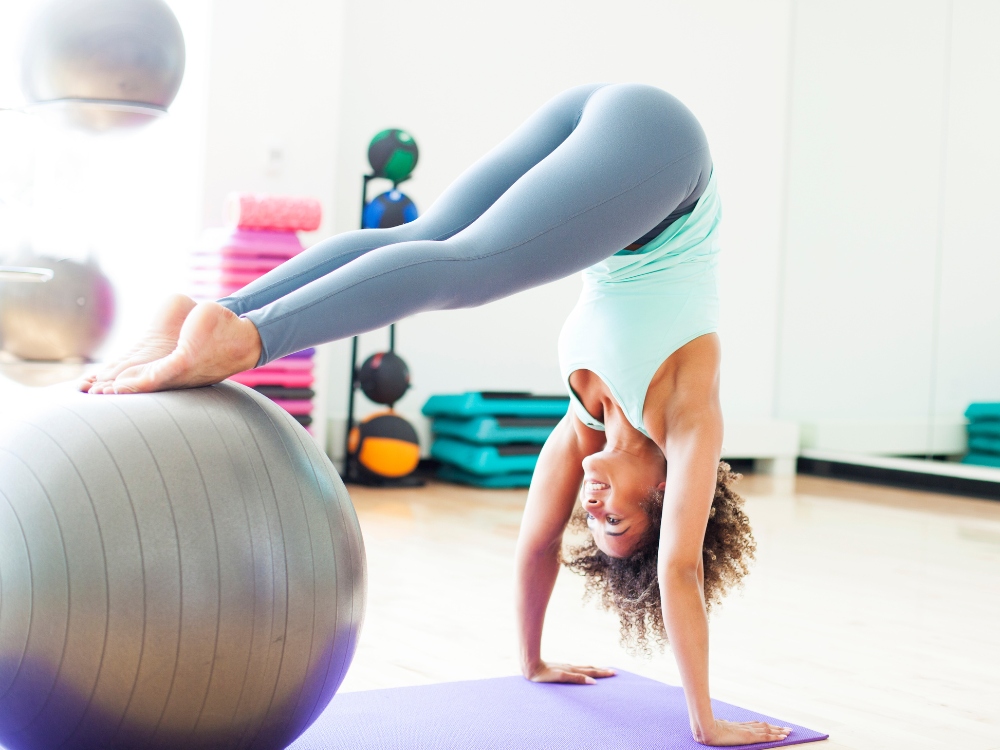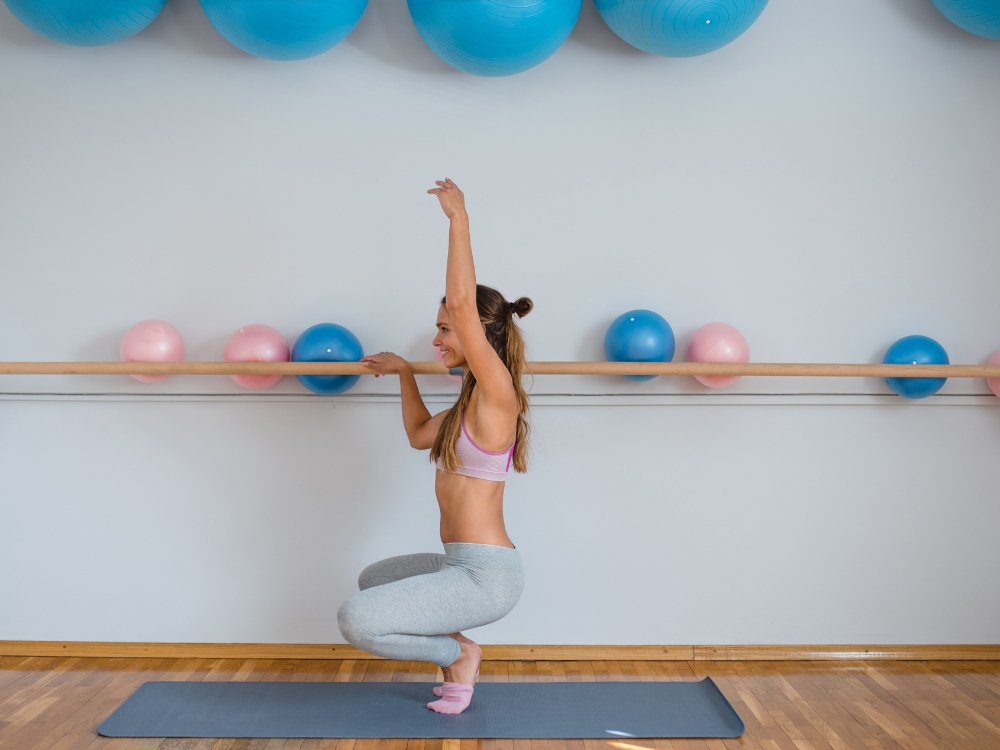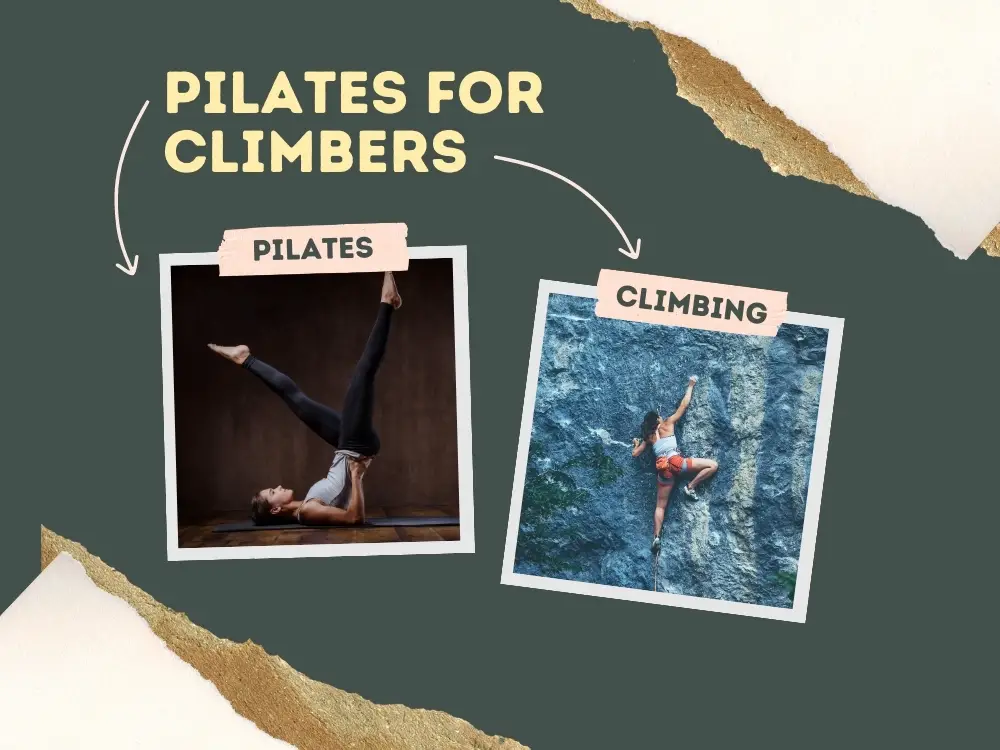Imagine a climber – wind in their hair, the mountainside looming before them as they approach the wall. They are ready to make an ascent; but are they strong enough?
Climb higher with Pilates for Climbers! This amazing exercise routine can help climbers not only reach greater heights on their climbs, but also build strength and agility for even more challenging ascents.
Pilates is a low-impact form of exercise that helps improve flexibility, mobility, and core strength. It focuses primarily on strengthening the muscles surrounding the spine and pelvis in order to create balance within the body. The result is increased stability which helps protect against injury during physical activity like climbing.
For climbers looking to increase their performance levels while remaining safe and injury free, Pilates should be at the top of their list of exercises to try out. Not only will they gain enhanced control over their bodies through improved coordination between different muscle groups, but they’ll also benefit from stronger postural alignment which translates into better technique while scaling walls or boulders.
So, if you’re ready to take your climbing skills up a notch, read on to find out how Pilates can help get you there!
What Are The Benefits Of Pilates For Climbers?
Climbing is a physically demanding sport that requires strength, power and balance. Pilates can help climbers to improve their overall performance and reach higher heights. It strengthens the entire body while increasing flexibility, coordination and stability. By using specific exercises and breathing techniques, climbers will be able to climb harder for longer periods of time without getting tired or fatigued as quickly.
Pilates also helps climbers work on weaknesses in certain muscle groups that are necessary for climbing success. It works on muscles such as your abdominals, glutes, hamstrings, quadriceps and back muscles which all contribute to a more solid base when climbing.
Additionally, by increasing core strength you are better able to maintain proper form during climbs so you don’t tire out too early or feel as though you’re expending too much energy unnecessarily. With increased control over your movements comes less risk of injury due to excessive strain or fatigue. All these benefits add up to improved technique and ultimately better performance on the rock face.
The combination of both physical and mental awareness allows climbers to gain confidence in their ability while pushing themselves further than they ever thought possible – this is where pilates truly shines!
As you become stronger mentally and physically through pilates training, it’s easier to focus on technical aspects of climbing like footwork and hand placements instead of worrying about how long you’ll be able to hang onto the wall before feeling exhausted.
The result? You get higher faster with greater efficiency! This makes transitioning from one move to another smoother with fewer mistakes along the way – perfect for any climber looking to take their game up a notch!

What Are The Best Pilates Exercises For Climbers?
For climbers looking to get stronger and climb higher, Pilates is the perfect choice. It’s a safe and effective way to increase strength while improving balance and flexibility. There are numerous exercises that can be tailored specifically for climber’s needs.
One of the best Pilates exercises for climbers is the bridge pose. This exercise strengthens your core muscles which helps improve stability, thus allowing you to stay on your feet longer when climbing. Another great exercise is the plank position; this works several muscle groups at once including your chest, back and arms. Finally, leg raises and twists help build power in your legs while also targeting your obliques to help maintain proper posture when climbing.
Pilates exercises not only enhance physical performance but also promote mental focus by honing body awareness skills needed for successful climbing experiences. With regular practice and dedication, these movements will become second nature, helping climbers reach their goals faster than ever before!
As an added bonus, with no special equipment required outside of a mat, it’s easy to incorporate into any climber’s lifestyle or training regimen. So, what pilates equipment is needed for climbers?
What Pilates Equipment Is Needed For Climbers?
Pilates is a great form of exercise for climbers and requires minimal equipment to get started. While specialized Pilates classes will use various pieces of equipment, the basics can be done with just a few items.
Here’s what you’ll need:
1. A Pilates or Yoga mat
2. An exercise Pilates bar or ball
3. Resistance bands or tubing
4. A foam roller
These pieces of equipment are readily available online and in most sporting goods stores at reasonable prices. You don’t need expensive gear to start your Pilates journey!
With these basic equipment, you can do exercises that target specific muscle groups as well as full-body workouts that integrate breathing techniques into movement sequences. This combination helps increase strength, balance and flexibility while creating more body awareness – all beneficial aspects when climbing outdoors or indoors.
Now let’s look at how to incorporate pilates into a climber’s training routine.

Incorporating Pilates Into A Climbers Training Routine
In the previous section, we discussed what equipment is needed to get started with Pilates for climbers. Now it’s time to take our practice to the next level and incorporate Pilates into a climber’s training routine. It may seem daunting at first, but taking on this challenge can be like unlocking an infinite power source that will help you climb higher than ever before!
The best way to begin incorporating Pilates is to start slowly and gradually build up over time. Start by setting aside 15-20 minutes per day for three days each week dedicated solely to Pilates exercises. As your skills improve, consider adding more challenging moves such as planks or even handstands. Make sure to always focus on good form and technique so that you can maximize your gains and minimize risk of injury. With consistency and dedication, you’ll soon find yourself climbing better than ever before!
By now, you should have a strong foundation in the basics of Pilates and how they can benefit every type of climber. Next up, let’s explore advanced level strategies for using Pilates while climbing outdoors or in the gym/wall.
Advanced Level Pilates Strategies For Climbers
Advanced level Pilates strategies are essential for climbers who want to reach their peak performance. To achieve the highest levels of strength and agility, it’s important to properly target your core muscles so that you can climb higher and more efficiently.
Here we will discuss some of the best advanced pilates exercises for climbers …
The first exercise is called ‘the teaser’ which helps engage your deep abdominal muscles as well as strengthen your lower back and improve overall posture. This is done by lying on your back with legs straight up in the air and arms overhead, then slowly lowering them down towards the ground while keeping your core engaged.
Another effective exercise is ‘the hundred’, where you lie flat on your back and lift both feet off the floor, pumping arms up and down while breathing deeply; this works to increase cardiovascular endurance while also strengthening abdominals.
Finally, there’s ‘the roll-up’ which targets all major muscle groups along spine like shoulders, mid-back, hamstrings, glutes, quads and hip flexors – a great way to truly maximize power output when climbing!
These challenging yet rewarding techniques can help transform any climber into an even better one – no matter how experienced they may be. With consistent practice of these advanced pilates moves combined with proper nutrition and restful sleep patterns, anyone can become a stronger athlete ready to tackle any wall or route!
Pilates Training Tips For Climbing Beginners
If you’re a climbing beginner, Pilates is an ideal form of exercise to help improve your performance. Pilates focuses on strengthening the core muscles which are essential for successful climbing. It also helps with balance and coordination as well as flexibility, all of which will give you an edge in your climbs.
To get started, there are some things to keep in mind when doing Pilates training for climbers:
First, focus on engaging the correct muscle groups. When performing any type of movement or exercise, be sure that it is targeting the specific area you want strengthened. For example, if you want to increase your upper body strength for overhangs and crimps, make sure to include exercises like planks and push-ups into your routine. On the other hand, if you need more lower body power for bouldering or technical routes, practice movements such as squats and lunges that target these areas.
Second, ensure proper form throughout each exercise session. Poorly executed moves can not only lead to injury but they won’t have the same effect on improving your overall technique either. Make sure to always use the full range of motion while executing each move and avoid taking shortcuts just so you can finish sooner. As long as you maintain good posture during each rep – even if it takes longer than anticipated – then this will pay off come time for actual rock climbing!

Frequently Asked Questions
In this section, I will answer some of the most frequently asked questions about Pilates for Climbers, so that you can learn even more and more …
How Often Should I Do Pilates To See Results In My Climbing?
When it comes to seeing results in climbing from Pilates, the question of frequency is important. How often should one do Pilates? The answer can vary depending on individual goals and preferences.
For those looking to see quick results, doing Pilates two or three times a week should be sufficient. This will help build strength and improve flexibility over time. Additionally, incorporating other forms of exercise into your routine such as running or weightlifting can help increase overall fitness levels more quickly. For climbers who want to take a longer term approach, practicing Pilates once or twice a week may provide enough benefits for the long run.
Regardless of how often you practice Pilates, consistency is key for achieving maximum gains in climbing performance. It’s also important to note that rest days are just as important as active training days – allowing your body time to recover is critical for avoiding injury and optimizing progress towards your goals.
Is Pilates Safe For Climbers With Lower Back Pain?
Climbing can be an intense physical activity, so ensuring you have a strong and healthy body is essential. But what if there’s already lower back pain? Is pilates safe for climbers in this situation? Let’s take a look.
Figuratively speaking, this conundrum is like being stuck between a rock and hard place. On one hand we want to maintain our strength and health to climb higher, but on the other hand we don’t want to risk further damage or injury.
Fortunately, when done correctly, pilates can provide a range of benefits such as:
1. Increased flexibility
2. Improved posture
3. Enhanced muscular control
4. Reduced stress on the joints
For those with existing lower back issues, caution should be taken when starting any new exercise regime including Pilates – it’s always best to start off slowly while consulting your doctor or therapist first before increasing intensity level over time.
With proper instruction from certified professionals and careful monitoring of progress, climbers with lower back pain can reap the rewards that come with doing Pilates regularly without risking additional harm.
Are There Any Pilates Classes Specifically Geared Towards Climbers?
For climbers looking to take their performance and strength to the next level, pilates classes specifically geared towards them may be a great choice. This type of class is designed with climbing in mind and can help improve overall body control and muscular endurance for those who are passionate about scaling new heights on the wall.
As with any physical activity, it’s important to assess your own capabilities before beginning a pilates program tailored for climbers. If you have existing lower back pain or other medical issues that might prevent you from safely participating, then consult with your doctor first. Additionally, make sure to look into what types of exercises and modifications will be included in the class so you can decide if it’s right for you.
Pilates classes specific to climbing can offer an excellent opportunity to hone your skills while focusing on building up core strength and stability which are essential when trying to reach greater heights as a climber. With proper instruction, technique and form should also be emphasized in order to ensure safe practice during each session.
Can I Do Pilates At Home, Or Do I Need To Go To A Studio?
Are you looking for a way to improve your climbing game? Pilates is an excellent option, but do you need to go to a studio or can you practice at home? Let’s explore the possibilities.
Pilates offers a multitude of benefits and can be done on your own in the comfort of your own space. From simple floor exercises that require no equipment to more complex moves that use props such as resistance bands, yoga blocks and straps, there are plenty of ways to get started with pilates from the convenience of your own living room.
With just a few pieces of gear, like mats and weights, you’ll have everything you need for an effective workout. Additionally, many online resources offer classes tailored specifically for climbers so you don’t have to worry about making time in your busy schedule to attend a live class.
No matter what method works best for you – whether it be attending a regularly scheduled class at the gym or following pre-recorded videos online – doing pilates regularly will help strengthen those core muscles which are essential when tackling challenging routes.
It doesn’t take long before you start feeling the difference (changing your body); in fact most people feel results after only five weeks (here you can check Pilates results after three months)!
So if you’re ready to give yourself an edge while out on the rocks, why not try some pilates today?

Conclusion
I know many people who have been doing Pilates for climbers and now they can already feel the difference. There’s no doubt that it has helped them become stronger, more flexible, and ultimately climb higher.
To all aspiring climbers out there looking to get stronger and climb higher: give Pilates a try! With dedicated classes specifically designed for climbing folk and easy-to-follow at-home routines available online, you too can reap the benefits of this amazing exercise. Who knows? Maybe we’ll run into each other one day at the top of some mountain peak!


